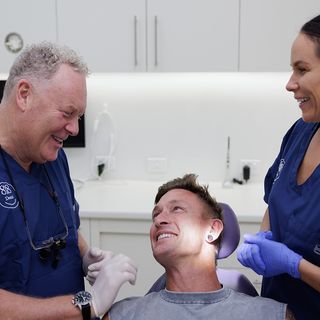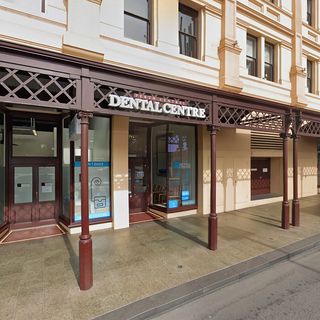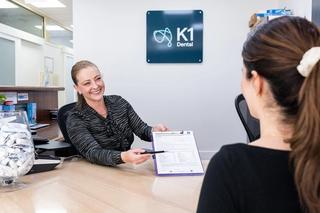
Orthodontics
Correcting tooth alignment with aligners, braces and orthodointic plates
Orthodontics
Correcting tooth alignment with aligners, braces and orthodointic plates
Orthodontic treatments help to correct teeth alignment, enhance appropriate tooth growth and usage, and create a straighter, healthier smile. Although some people believe that braces are only for teenagers, orthodontic treatments can improve the dental health of individuals of all ages.
Do you need orthodontic braces?
Orthodontic braces are primarily used to straighten teeth. You may need a brace if you suffer from one of the following:
Your teeth or jaw have not developed correctly
Your teeth are crooked, protruding or out of place
You have an overcrowded mouth
You have gaps between teeth
Your bottom and top teeth do not meet when you bite down
Whilst most patients who need orthodontic braces are adolescents, more and more adults are having orthodontic treatment, perhaps after an accident or because they didn’t get the chance when they were younger.
Your first appointment
As every patient is slightly different, the first step of getting braces is having a consultation with one our caring dentists. They are experienced in correcting bites, alignment and crooked teeth.
What happens next?
The process of getting braces involves future consultations to tighten and adjust the braces. We will work with you to book in convenient times for yourself and your family. We aim to make the treatments as painless as possible and always have your comfort front of mind.
Types of Orthodontic Treatments
Dental braces are not what they used to be. A variety of new techniques and equipment have been developed to enhance the patient's experience and shorten treatment times.
Fixed metal braces
Traditionally fixed or orthodontic braces are high-quality metal brackets that are attached to each tooth. These brackets are then connected by a special type of wire, which slowly pulls the teeth into alignment.

Clear aligners
Clear aligners are one of the most sought-after types of orthodontic treatment for adults.
Most commonly known by the manufacturer's name, such as Invisalign®, aligners are created using advanced technology. This includes a series of aligners custom-made for your mouth that apply targeted pressure to your teeth, which gradually moves them into alignment as you move through your set of aligners.

Care and maintenance
When you wear braces, aligners, or retainers, it will be necessary to adjust your eating habits to prevent damage to both the hardware and your teeth.
We recommend avoiding hard foods and sticky sweets that can break or pull your braces from your teeth such as gum, toffee, popcorn, nuts, hard biscuits, etc. You should also avoid biting into foods with your front teeth. Rather, cut foods into manageable pieces that you can chew with your back teeth.
Braces can trap food in your mouth after you eat, so be sure to brush and floss after every meal. Continue to floss and brush your teeth regularly, but be sure to use the special brushes and flossing tools recommended (and typically provided) by your orthodontist.
Specialised floss brushes and mouthwash are particularly useful for cleaning out braces after a meal. Carry a small cleaning kit with you to school or work, so you have the supplies you need on hand to keep your braces and teeth in ideal condition.
To learn more about the best orthodontic services for you, get in touch with our friendly team to schedule an appointment.
Dr. Adam’s 5 Tips for Orthodontic Braces





Frequently asked questions
The price of dental braces will vary dependant on a number of factors... such as the length of time you will need to wear them, how many consultations and adjustments you need and other factors tha will be specific to you.
While braces are highly effective, they do usually come with discomfort as your teeth move into new positions. This usually lasts for a few days after first having them applied, and after adjustments, where your teeth and gums will feel tender.
During these days, you can manage pain with over-the-counter pain medications and eat a diet of soft foods - ie. no apples, uncooked carrots, hard biscuits, etc.
Yes! Dental technology has come a long way from the early days of metal braces, and clear aligners are now just as effective as metal braces.
An orthodontist is a specialist who works to ensure your teeth are straight and your jaw is aligned. They will prepare your teeth for orthodontic treatments, carry out treatments such as braces, maintain and adjust appliances as needed, and keep ongoing appointments with you as you transition out of treatment.
A dentist is your general expert on your teeth, gums, and oral health. They will perform your check-ups, complete treatments such as fillings, root canals, and crowns, and help you work on your health.
An orthodontist is a specialist who focuses on teeth straightening and alignment and can apply braces and other orthodontic treatments.
Once your orthodontic treatment is completed and your braces are removed, you will be fitted with a retainer to ensure that your teeth remain in their new alignment.
Be sure to wear your retainers as directed, or you may undo all the previous work. Do not wear your retainer while eating, and be sure to brush it before you insert it into your mouth.
For patients who do not wish to use a removable retainer, a permanent wire retainer can be cemented to the back of the teeth to keep them in place.
Schedule a consultation at K1 Dental Toorak
Towards the end of your treatment, retainers may also be used to hold your newly positioned teeth in place whilst your bone and gum adjust to their new positioning.



